AI agents aren’t magic. They’re structured systems that combine reasoning, tools, and orchestration to deliver consistent, production-ready outcomes.
The best implementations don’t just “let the AI run”—they shape its autonomy with frameworks, guardrails, and feedback loops.
Anthropic’s resource on Building Effective Agents provides an excellent technical foundation for thinking about how to structure these systems.
1. Fundamentals
Basic LLM

A Large Language Model on its own can:
- Interpret input
- Generate responses
But without memory, tooling, or orchestration, it’s limited in scope, prone to hallucination, and inconsistent for complex, multi-step workflows.
Augmented LLM
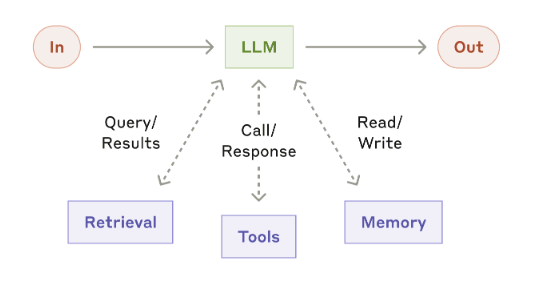
An augmented LLM adds:
- Memory (short-term or vector-based)
- Tools (APIs, databases, automation triggers)
- Orchestration logic (control over when and how to call the LLM)
This transforms the model from a single-turn assistant into the foundation of an agent.
2. Basic Agentic Frameworks
Prompt Chaining

Sequentially passing the output of one agent into the input of the next.
- Best for: High control, clear sequential steps.
- Cons: Requires understanding and documenation for the process. Not as agile as other solutions. Changes to the process often require structural changes to the flow.
Routing
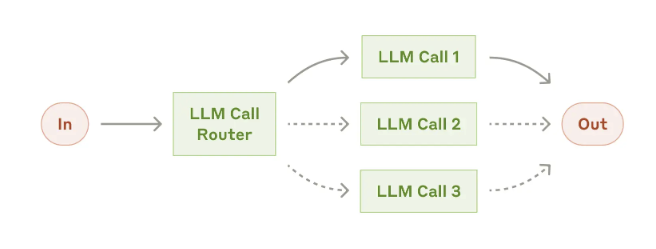
A classification step sends the task to the most appropriate downstream agent.
- Best for: High-volume, multi-category workflows.
- Risk: Misclassification cascades into wrong outputs.
Parallelization
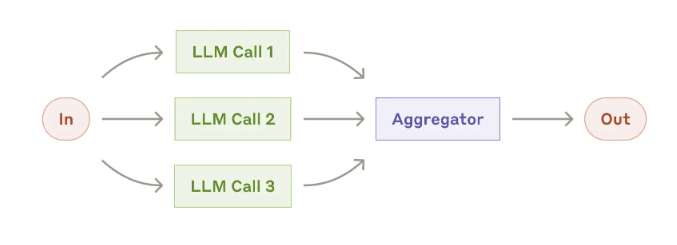
Multiple agents handle sub-tasks simultaneously; results are merged.
- Best for: Multi-dimensional analysis; latency reduction.
- Risk: Conflicting outputs require robust merge logic.
Orchestrator

A parent agent that decides which agents to call, and in what order.
- Best for: Complex workflows requiring dynamic sequencing.
- Cons: As the execution is more flexibile the tooling around the discrete components must be well designed and implemented.
Evaluator–Optimizer Loop
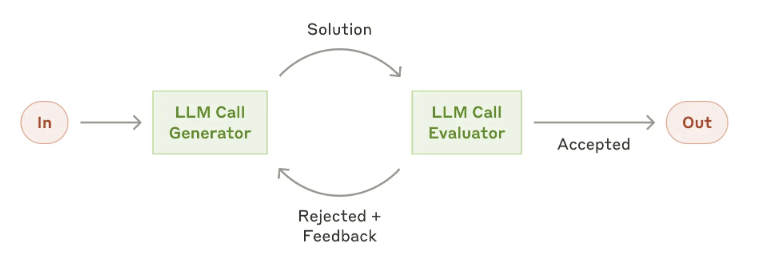
An evaluator checks if output meets criteria; if not, an optimizer revises and resubmits.
- Best for: Quality-critical outputs.
- Risk: Loop stalls if criteria are vague, or poor design can result in expensive iteration counts.
3. Complex Enterprise Patterns
Above are the fundamental patterns, but depneding on the complexity they will be synthesized into complex patterns for solving different problems at scale.
Orchestrator + Evaluator–Optimizer

Using Evaluator–Optimizer as each node within an Orchestrator pattern:
- Ensures iterated, production-level outputs at every stage.
- Common in regulated industries or high-brand-risk environments.
- Often coupled with guardrails frameworks to enforce:
- Output quality
- Output structure
- Compliance with policy
Routing + Tool Agents
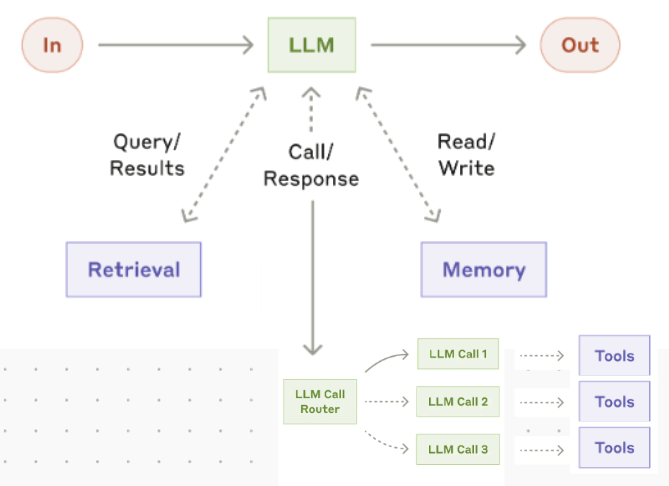
Using a Routing pattern to select the correct tool-specialized agent:
- Each agent operates in a sub-collection of tools it’s expert in.
- Ensures specialization while maintaining flexible coverage of domains.
- Example: Customer support routing to agents specialized in billing, technical troubleshooting, or escalation handling.
4. Strategic Takeaways
Two categories of problem drive framework choice:
- Known workflow and fixed steps:
- The sequence of actions will remain the same across problems.
- Prompt Chaining and Parallelization excel here due to their predictability, control, and ease of optimization.
- Variable workflow and steps:
- The sequence may change depending on the problem.
- Requires more flexibility and places more reasoning and iteration burden on the agent.
- This is where Parallelization can be upgraded to an Orchestrator–Workers pattern, and where the Evaluator–Optimizer loop shines.
- In these cases, agents can dynamically create and delegate tasks, evaluate each other’s work, and iterate until outputs meet strict requirements and guardrails.
- Known workflow and fixed steps:
Evaluator–Optimizer is the most common enterprise pattern.
It’s often embedded inside other frameworks for complex tasks.Guardrails are critical in production to enforce output quality and consistency.
Mix frameworks to match your operational priorities:
- Use Routing for triage.
- Parallelization for speed, options, and hedging against hallucination.
- Orchestrator for sequencing.
- Evaluator–Optimizer for quality control and consistent output.
Like any architectural and software solution, there are patterns and best practices. But, the right solution will be dependendant on your pain points, goals, current system and future system states.
By understanding and deliberately applying these frameworks, you can design AI systems that are:
- Reliable
- Auditable
- Scalable
- Enterprise-grade
- Built to fit